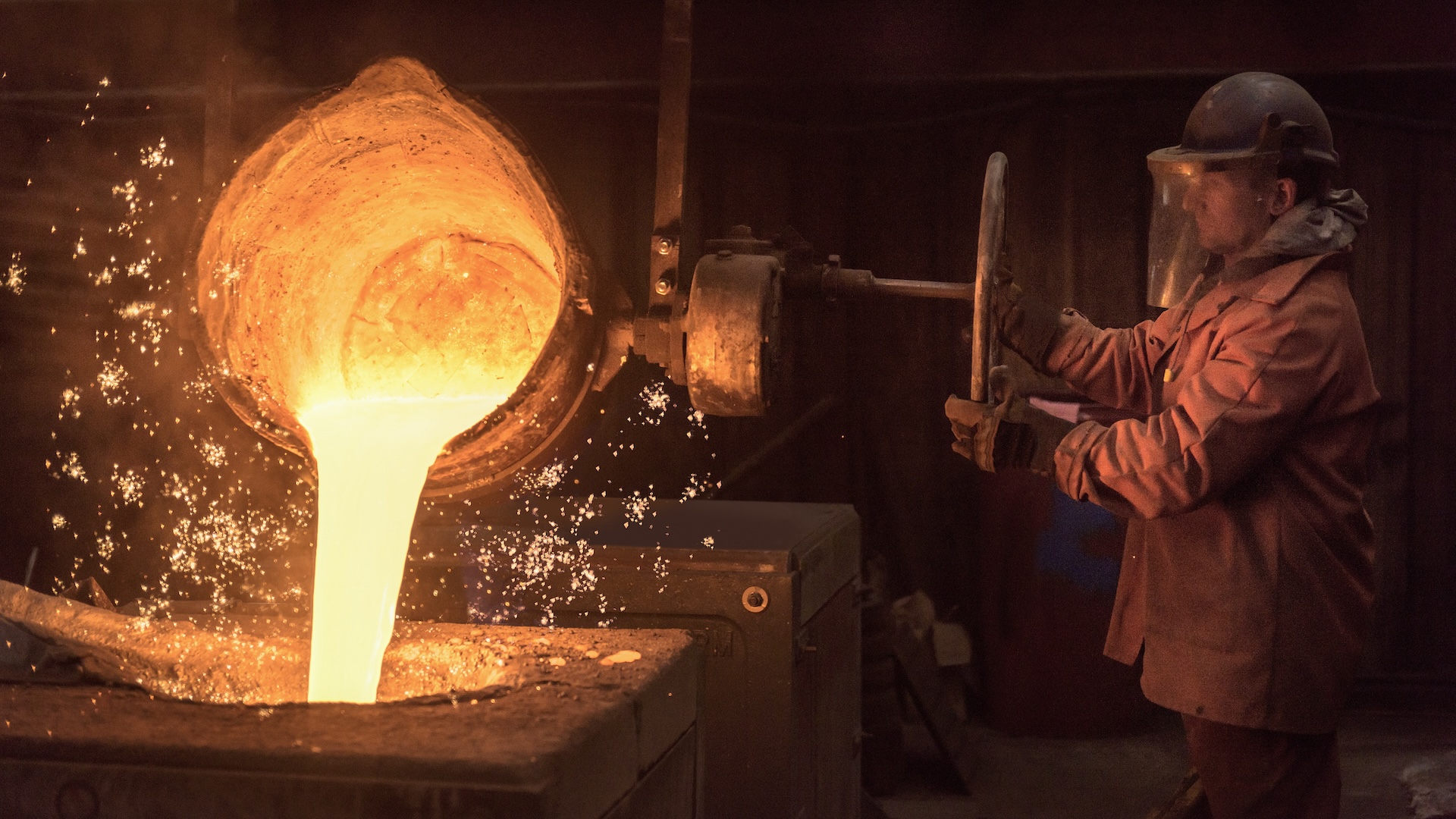When was steel invented?
No one knows for sure when steel was invented, but some of the earliest examples crop up in the first millennium B.C. in Central and South Asia.

Steel is the backbone of the modern world and used in houses, skyscrapers, automobiles and more. But steel isn't found in nature, so when did humans invent steel?
It turns out that this sturdy modern metal dates back at least 2,000 years, though archaeologists don't have a precise date for when it emerged.
Steel is an alloy of iron and carbon; it's mostly iron, but the crucial addition of between 0.2% and 1% carbon makes it harder, stronger and more resistant to rusting than pure iron.
Related: Why doesn't stainless steel rust?
Archaeologists think this innovation was independently discovered in several places and then spread through the ancient world.
"Steel developed through the first millennium B.C. across much of the Old World," Paul Craddock, an expert in ancient metallurgy at the British Museum, told Live Science.
Some of the earliest were "crucible" steels made by melting iron and carbon together, possibly in parts of Central and South Asia, he said.
Get the world’s most fascinating discoveries delivered straight to your inbox.
Some other early forms of manufactured iron contained enough carbon to be classified as steel. But by the Roman era, artifacts like Roman daggers were made from proper heat-treated steel, he said.
That requires forging — heating and hammering cast iron to remove impurities and add traces of carbon. No one knows who first figured this out, but it required melting iron at very high temperatures to remove "slag," or the impurities caused by creating it from iron ore, Craddock said.
From bronze to iron
The transition from the Bronze Age to the Iron Age occurred in most of Asia, the Middle East and Europe about 3,000 years ago. For more than 2,000 years before that, people used bronze — an alloy of about 90% copper and 10% tin — to make metal weapons, armor and ceremonial vessels. However, such items were highly prized and usually unaffordable for ordinary people.
Independent archaeologist Alessandra Giumlia-Mair told Live Science that iron supplanted bronze for many uses mainly because iron ore is plentiful and relatively cheap to obtain — once someone had figured out how to make iron. So iron swords and daggers weren't necessarily sharper or more durable than bronze swords or daggers, she said, but they swept across the ancient world because they were cheaper to make.
Over time, early blacksmiths developed methods of making harder iron, including steel, and so more people could afford iron weapons and tools. But bronze continued to be used for high-quality items such as vessels, lamps and personal ornaments until after the Middle Ages, Giumlia-Mair said.
Nowadays, steel is usually made in specialized furnaces that take ingots of "pig iron" made from iron ore and refine them into different steel alloys at high temperatures while exposing them to oxygen. Different types of steel have varying amounts of carbon and other elements — such as the chromium that's essential to stainless steel.
Tom Metcalfe is a freelance journalist and regular Live Science contributor who is based in London in the United Kingdom. Tom writes mainly about science, space, archaeology, the Earth and the oceans. He has also written for the BBC, NBC News, National Geographic, Scientific American, Air & Space, and many others.



